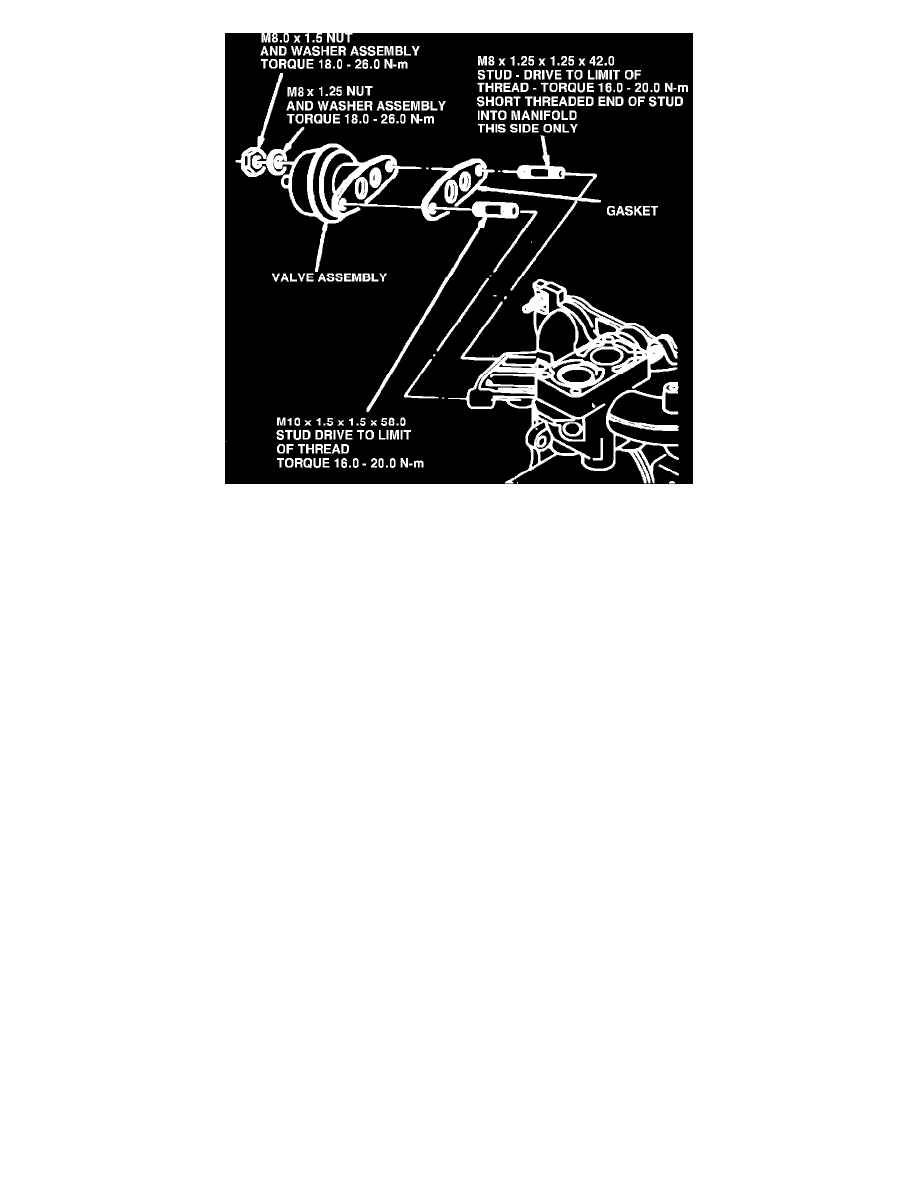EXP L4-098 1.6L VIN 2 2-bbl (1983)

Fig. 39 EGR connections. 4 & 6 cyl. engines
On four and six cylinder engines, the EGR system is basically the same as the Spacer Entry EGR System except that exhaust gas is routed directly
from the exhaust manifold, Fig. 39.
Two variables control the operation of the EGR system, 1) engine coolant temperature and 2) carburetor vacuum. When engine coolant
temperature is below the specified level the EGR system is locked out by a temperature controlled vacuum switch. The vacuum switch is installed
in series with the EGR valve. This valve receives vacuum from a port in the carburetor body. When the valve is closed due to lower coolant
temperature, no vacuum is applied to the EGR valve and no exhaust gas is fed to the air-fuel mixture. When the engine coolant temperature
reaches the specified level, the valve opens allowing vacuum to be applied to the EGR valve. Exhaust gas is then fed to the air-fuel mixture.
The second factor controlling EGR operation is carburetor vacuum. The location of the EGR port in the carburetor determines at what point
vacuum is sent to the EGR valve. Vacuum should be fed to the EGR vacuum control valve when the primary throttle plate reaches a position
corresponding to a road speed of approximately 20 mph under light acceleration.
